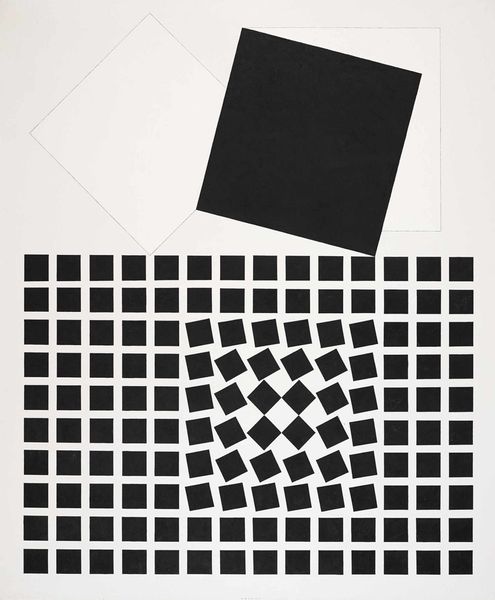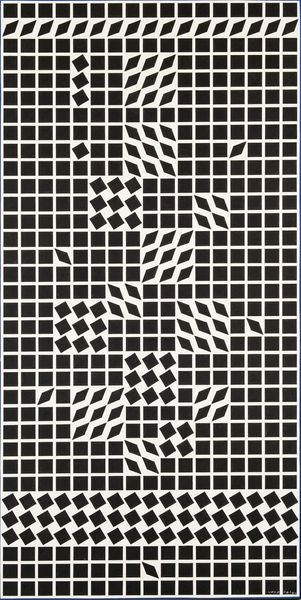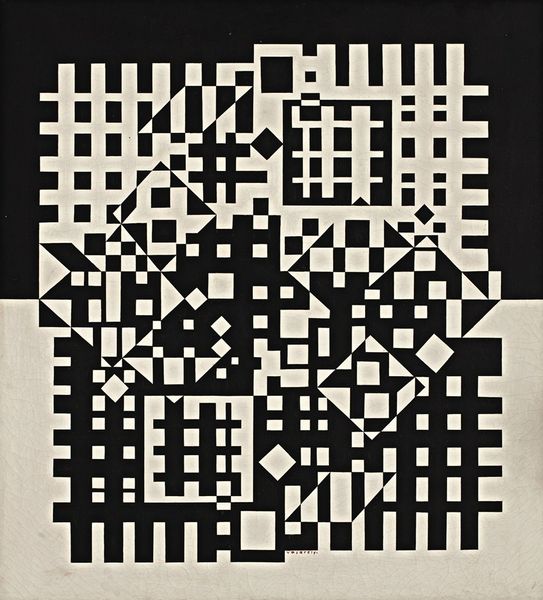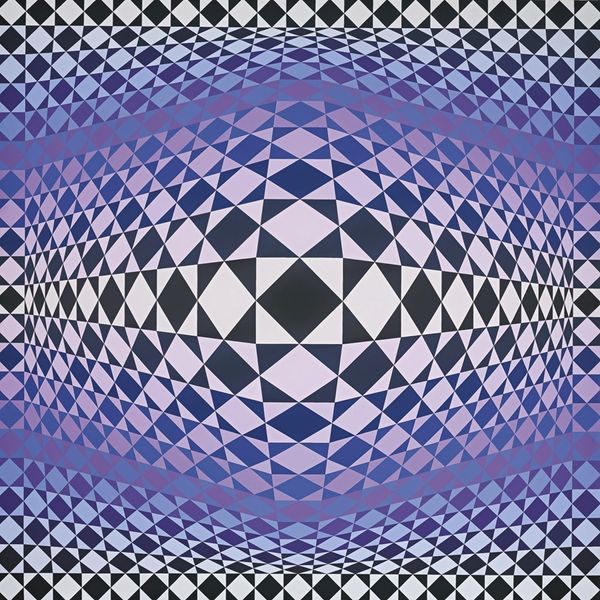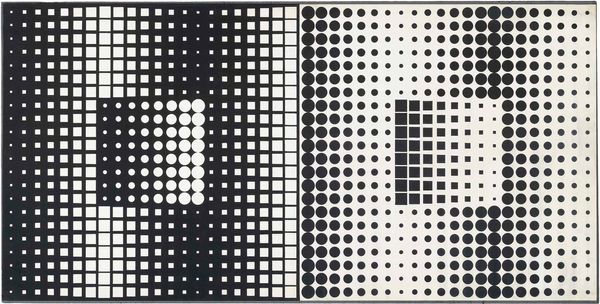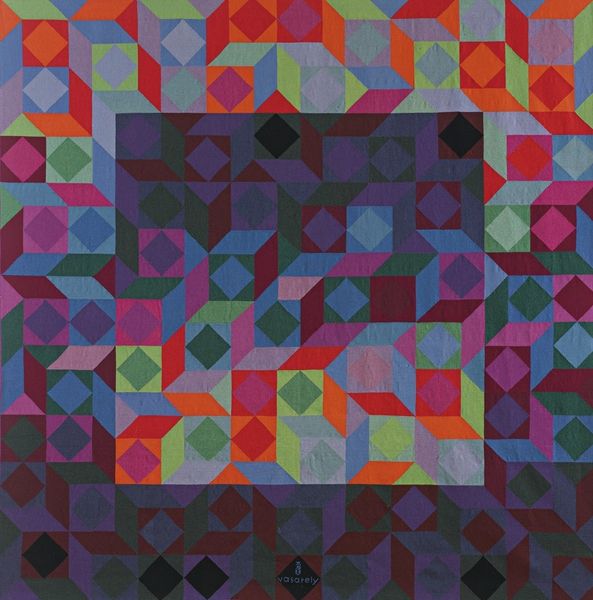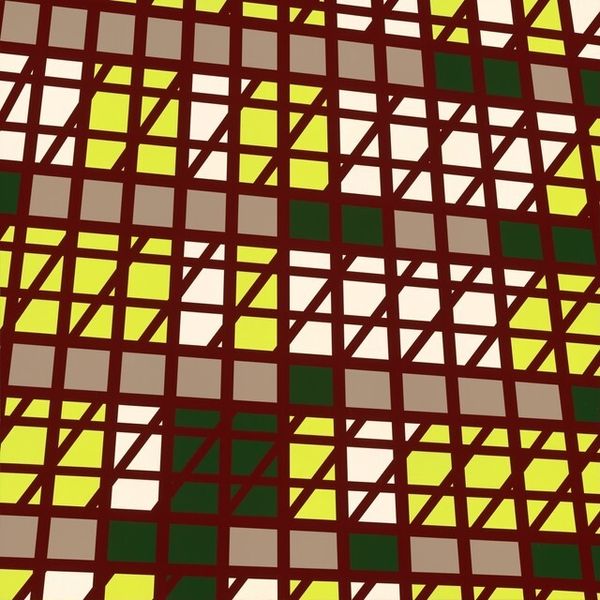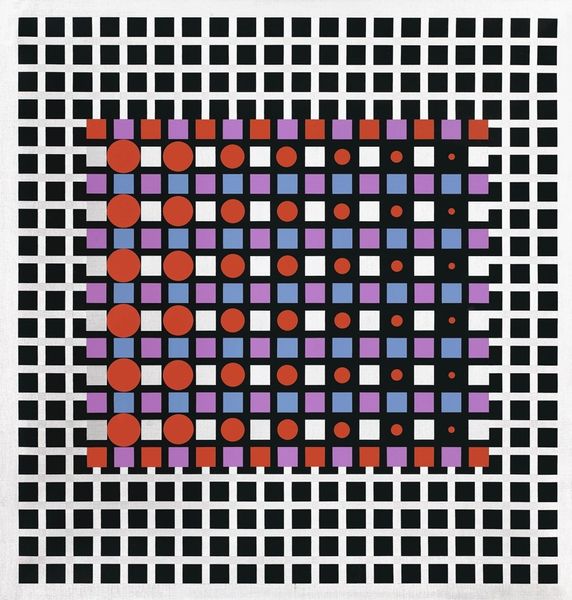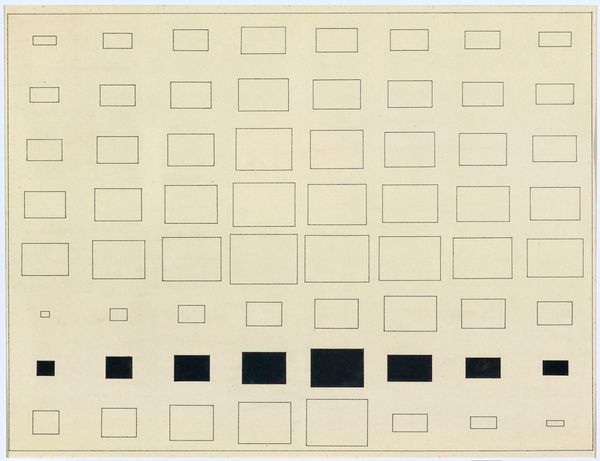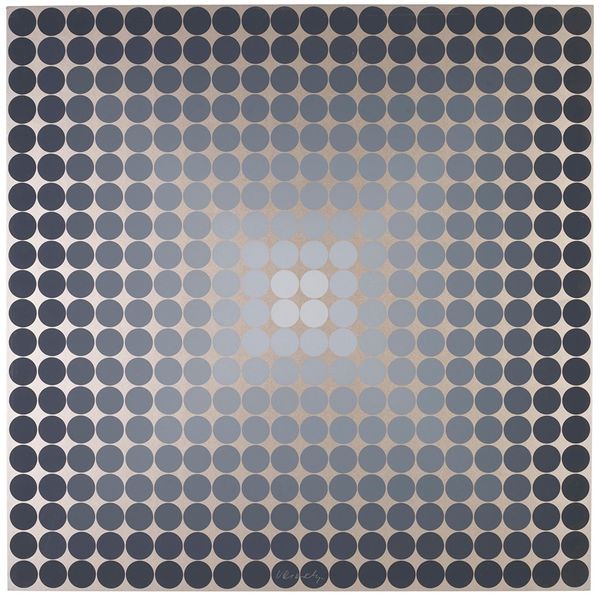
#
op-art
#
abstract
#
form
#
geometric
#
geometric-abstraction
#
abstraction
#
line
#
modernism
Copyright: Modern Artists: Artvee
Curator: This is "Eridan-2" by Victor Vasarely, created between 1957 and 1963. A striking example of Op Art, wouldn’t you say? Editor: Absolutely. It’s dizzying, immediately activating the eye. The black and white contrast and grid structure create this push-and-pull effect, almost like an optical illusion. Very compelling use of basic forms. Curator: Indeed. And consider that Vasarely, steeped in the modernist principles of the time, sought to create art accessible to everyone, blurring the lines between high art and design through these repeated geometric forms. Editor: And it speaks volumes about accessible design. He is working directly with the materiality, labor, and production – questioning artistic expression, focusing on process, the actual doing of art and democratizing the creative output through simplified forms. It challenges traditional hierarchical boundaries. Curator: Exactly, it’s a radical gesture. His approach allows us to think about perception itself – the relationship between the artwork and the viewer becoming a critical element in its completion. Editor: The historical context is key too. Post-war optimism mixed with Cold War anxieties fueled experimentation and the quest for universality that speaks to shifting understandings of industrial and individual meaning-making during this period. Curator: I’d add that the stark contrast – the black and white – plays with positive and negative space, and invites the viewer to grapple with binaries, tensions inherent in both abstract and representational artistic approaches and society in the era in general. Editor: Right. This period, it's about stripping down and looking for core values – something evident in all the arts. Curator: So "Eridan-2," though seemingly simple, represents a rich tapestry of social and artistic thought, prompting us to question the very nature of how we see, how we interact with material objects and artistic labor. Editor: Precisely. Vasarely used geometric patterns to address not only abstraction, but to encourage critical, social questions related to form, function, making, and material, especially in mass produced format that allowed art to enter public space, engage the viewer, and break down previous art viewing power dynamics. It still resonates powerfully today.
Comments
No comments
Be the first to comment and join the conversation on the ultimate creative platform.
